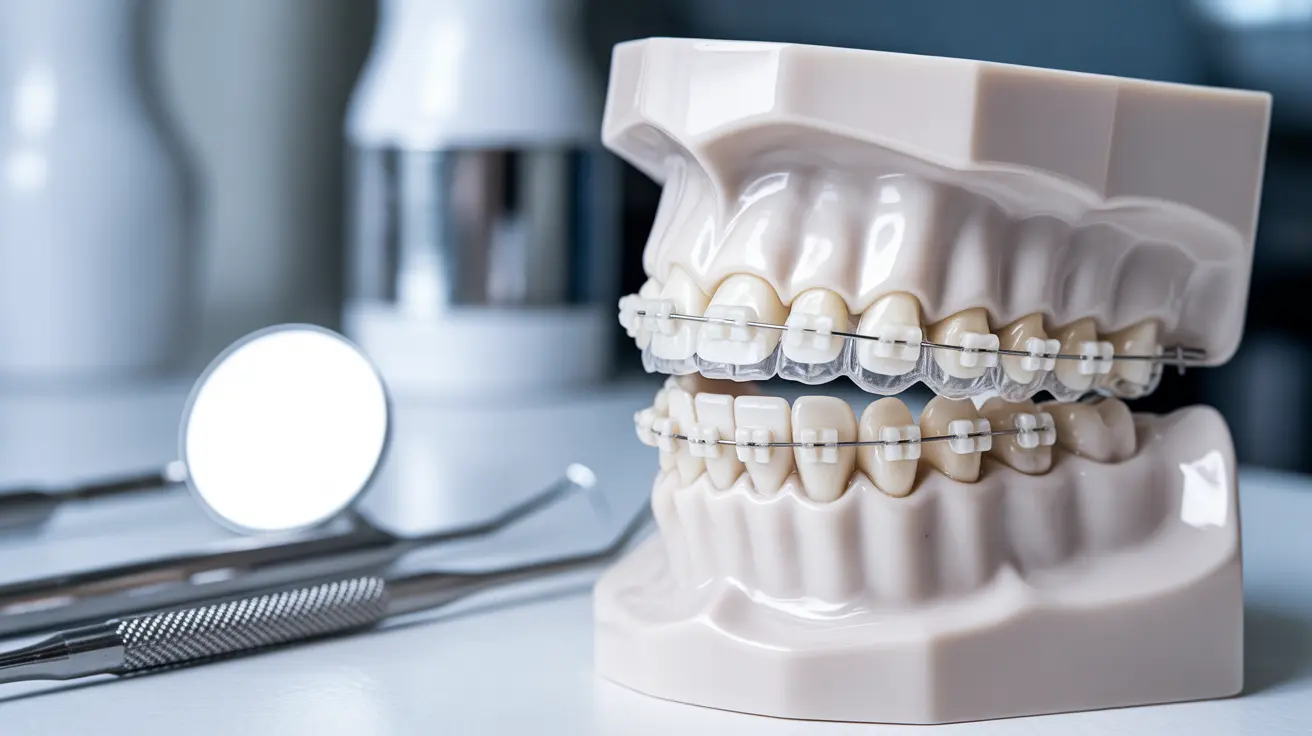Many adults and teens desire straighter teeth but feel hesitant about traditional metal braces due to their visibility and discomfort. Fortunately, modern dentistry offers several effective alternatives that can help you achieve a beautiful, aligned smile without the need for conventional braces.
Understanding your options for teeth straightening can help you make an informed decision that fits your lifestyle, budget, and orthodontic needs. From clear aligners to ceramic alternatives, these innovative solutions provide discreet and comfortable ways to correct dental misalignment.
Clear Aligners: The Popular Invisible Solution
Clear aligners have revolutionized the orthodontic industry by offering a nearly invisible way to straighten teeth. These custom-made, transparent plastic trays gradually shift your teeth into their desired positions through controlled force application.
The treatment process begins with a comprehensive dental examination and digital impressions of your teeth. Using advanced 3D technology, orthodontists create a series of aligners that you wear for approximately 20-22 hours daily, changing to a new set every one to two weeks.
Clear aligners work best for mild to moderate orthodontic issues, including crowded teeth, gaps, and minor bite problems. The treatment duration typically ranges from 6 to 18 months, depending on the complexity of your case.
Ceramic Braces: A Less Visible Traditional Option
Ceramic braces function similarly to traditional metal braces but use tooth-colored or clear brackets that blend with your natural teeth. These brackets are made from high-grade ceramic materials that resist staining and provide effective teeth movement.
The ceramic brackets are bonded to your teeth and connected with wires, just like metal braces. However, the aesthetic appeal makes them significantly less noticeable, especially from a distance. Some ceramic braces even use white or clear wires to further reduce visibility.
This option is particularly suitable for patients with more complex orthodontic needs that cannot be addressed with clear aligners alone. Treatment time is comparable to traditional braces, typically lasting 18 to 36 months.
Retainers and Minor Movement Devices
For individuals with very minor dental irregularities, specialized retainers or clear overlay appliances can provide limited tooth movement. These devices are often used after previous orthodontic treatment or for small corrections that don't require comprehensive realignment.
Hawley retainers, made with acrylic and wire components, can make small adjustments to tooth positioning while maintaining the overall alignment. Clear retainers with slight modifications can also encourage minor movements in specific teeth.
Dental Veneers: Instant Cosmetic Correction
While not technically a method of moving teeth, dental veneers can create the appearance of straight teeth by covering the front surface of misaligned teeth. These thin porcelain or composite shells are custom-designed to improve the shape, size, and alignment appearance of your teeth.
Veneers are ideal for patients with minor crowding, gaps, or irregularly shaped teeth who want immediate results. The process typically requires two to three dental visits and can dramatically transform your smile's appearance.
However, veneers require some tooth structure removal and are considered a permanent cosmetic solution rather than an orthodontic treatment.
Professional Supervision: The Key to Safe Treatment
Regardless of which teeth straightening method you choose, professional dental supervision is crucial for achieving safe and effective results. Licensed orthodontists or dentists can properly assess your dental structure, bite alignment, and overall oral health before recommending the most appropriate treatment.
Professional oversight ensures that your chosen method addresses not only cosmetic concerns but also functional aspects of your bite. This comprehensive approach helps prevent potential complications such as jaw pain, tooth damage, or incomplete treatment results.
Regular check-ups during treatment allow for adjustments and monitoring of your progress, ensuring optimal outcomes and addressing any issues that may arise during the straightening process.
Comparing Your Options: Making the Right Choice
When deciding how to straighten teeth without traditional braces, consider factors such as the severity of your misalignment, your lifestyle preferences, budget constraints, and desired treatment timeline.
Clear aligners offer maximum discretion and convenience but work best for less complex cases. Ceramic braces provide effective treatment for more challenging orthodontic issues while maintaining better aesthetics than metal braces.
Your orthodontist can help evaluate which option aligns best with your specific needs and goals, ensuring you choose a treatment that delivers both functional and cosmetic improvements to your smile.
Frequently Asked Questions
How can I straighten my teeth without wearing traditional metal braces?
You can straighten your teeth using clear aligners, ceramic braces, or specialized retainers for minor corrections. Clear aligners like Invisalign are nearly invisible and removable, while ceramic braces use tooth-colored brackets that blend with your teeth. For very minor issues, modified retainers can provide limited movement. Dental veneers can also create the appearance of straight teeth without actually moving them.
What are the differences between clear aligners and ceramic braces for teeth straightening?
Clear aligners are removable, nearly invisible plastic trays that you change weekly, while ceramic braces are fixed appliances with tooth-colored brackets and wires. Clear aligners work best for mild to moderate cases and typically take 6-18 months, whereas ceramic braces can handle more complex issues and usually require 18-36 months. Clear aligners offer more convenience for eating and cleaning, but ceramic braces provide continuous force for more challenging corrections.
Are clear aligners effective for mild to moderate teeth misalignment?
Yes, clear aligners are highly effective for mild to moderate teeth misalignment, including crowded teeth, gaps, and minor bite issues. They use controlled force to gradually move teeth into proper position over time. However, severe cases involving significant bite problems or complex tooth movements may require traditional orthodontic treatment. A consultation with an orthodontist can determine if clear aligners are suitable for your specific situation.
Is it safe to try teeth straightening methods at home without a dentist's supervision?
No, it is not safe to attempt teeth straightening without professional dental supervision. DIY teeth straightening can lead to serious complications including tooth loss, root damage, gum disease, and bite problems. Professional orthodontists assess your overall oral health, create appropriate treatment plans, and monitor progress to ensure safe and effective results. Only licensed dental professionals should oversee any teeth straightening treatment.
How do clear aligners and ceramic braces compare in terms of comfort, visibility, and maintenance?
Clear aligners typically offer superior comfort with smooth plastic surfaces and no metal components, while ceramic braces may cause initial irritation to cheeks and lips. For visibility, clear aligners are nearly invisible when worn, whereas ceramic braces are less noticeable than metal braces but still visible up close. Maintenance-wise, clear aligners allow normal brushing and flossing since they're removable, while ceramic braces require special cleaning techniques and dietary restrictions to prevent bracket damage and staining.




